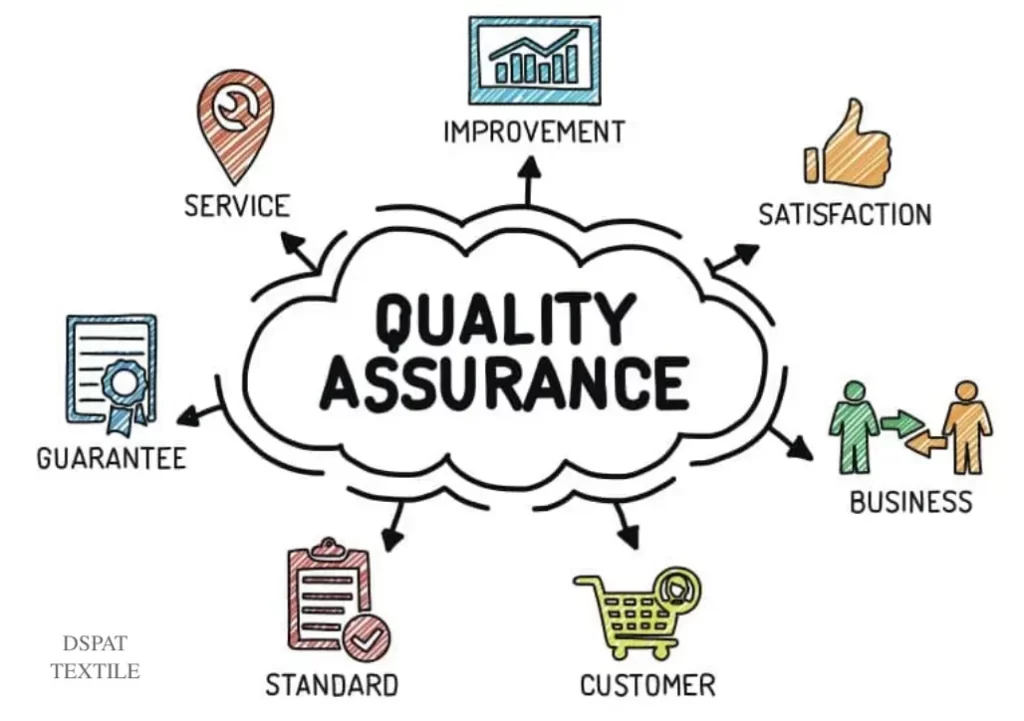In the fast-paced and competitive world of garment manufacturing, ensuring quality control through 7.0 System is of utmost importance. With so many businesses in this sector, if you lose the quality of your product, you are sure to lose your customers.
No business wants that! This is the reason why there are various methods that are specifically designed for quality assurance in the garment industry. One such powerful tool that has revolutionized the garment inspection process is the 7.0 system.
It is a complete quality assurance tool that takes care of every aspect of a garment production line to make sure that you meet the highest standards of quality. So, let’s take a deep dive to understand what it is and how it affects the garment industry.
The 7.0 System in Garment Inspection
Picture this: A finely crafted garment that oozes perfection, with not a stitch out of place. That’s what this system ensures.
The 7.0 System checks to confirm that every garment meets the highest standards of quality, fit, and finish. It’s a comprehensive framework that encompasses various stages of inspection, starting from the initial fabric inspection all the way to the final product evaluation.
So, let’s delve into the 7.0 system in garment inspection, exploring its definition, key features, benefits, and how it is implemented.
Understanding the 7.0 System
The 7.0 system in garment inspection is a structured framework that encompasses seven critical elements to ensure thorough quality control. These elements include fabric, color, accessories, workmanship, measurement, labeling, and packing. By assessing these aspects, garment manufacturers can identify and address any potential issues or discrepancies before the final product reaches the hands of consumers.
Key Features of the 7.0 System
Here are the quality inspection checkpoints in a garment industry production line:

- Fabric Inspection
Quality begins with the foundation, and that’s why this System places great importance on fabric inspection. Every batch of fabric is meticulously examined for any possible flaws and adherence to specifications.
This step ensures that the fabric meets the specified quality standards, including color consistency, texture, durability, and compliance with safety regulations.
- Color Inspection
Color plays a significant role in garment aesthetics. After all, it’s one of the first things that attracts customers.
The 7.0 system emphasizes color inspection to ensure uniformity and accuracy. It involves comparing the actual color of the garment with the desired color, taking into account factors like lighting conditions and fabric type.
- Accessories Inspection
Garments often incorporate various accessories such as buttons, zippers, and trims. They play a vital role in the final look of the garment.
This scrutinizes these accessories to ensure they meet the required quality standards, including durability, functionality, and proper attachment.
After all, no customer wants a loose button or a stuck zipper!
- Workmanship Inspection
Workmanship inspection evaluates the overall construction and stitching quality of the garment.
This step examines the stitching techniques, seam strength, proper alignment, and overall finish. It ensures that the garment is free from defects and meets the desired standards of craftsmanship.
- Measurement Inspection
Accurate measurements are crucial for ensuring the proper fit and sizing of garments.
The 7.0 system includes a comprehensive measurement inspection process to verify that garments conform to the specified measurements and size charts.
This step helps minimize customer dissatisfaction and returns due to sizing issues.
6. Labeling Inspection
Labels provide essential information about the garment, including care instructions, fabric content, and brand identification.
The 7.0 system pays close attention to label inspection to ensure that all required labels are present, accurate, and properly attached.
- Packing Inspection
The final element of the 7.0 system focuses on the packing of garments.
This step involves inspecting the packaging materials, ensuring that they are clean, undamaged, and suitable for protecting the garments during transit. It also involves verifying the correct quantity and assortment of garments in each package.
When customers receive their order, the packaging is the first impression of your brand on them. You don’t want to mess it up!
Benefits of the 7.0 System in Garment Inspection

The 7.0 system in garment inspection offers several significant benefits for manufacturers:
- Enhanced Quality Control
By addressing and assessing the key elements of garment production, the 7.0 system helps identify and rectify quality issues at an early stage.
This results in higher-quality garments, reducing customer complaints and returns.
- Improved Efficiency
The structured approach of the 7.0 system streamlines the inspection process, saving time and effort.
As it is a straightforward, step-by-step system, it enhances the overall efficiency of the quality assurance process. By systematically assessing each element, inspectors can efficiently identify and address any discrepancies, ensuring faster and more accurate inspections.
- Reduced Production Costs
By detecting and resolving quality issues early in the production process, the 7.0 system helps minimize rework, wastage, and the need for costly corrections.
This leads to cost savings and improved profitability for garment manufacturers.
- Enhanced Customer Satisfaction
The whole point of using the 7.0 system in garment inspection is to manufacture garments that have supreme quality. And better quality naturally gives way to better customer satisfaction.
Consistently delivering high-quality garments builds customer trust and satisfaction. The 7.0 system ensures that garments meet or exceed customer expectations, leading to positive brand experiences and increased customer loyalty.
Implementing the 7.0 System in Garment Inspections
Now you know what the 7.0 system in garment inspection is and how it positively affects a garment manufacturer. So, if you want your product to have consistently high quality, implementing this system is surely a must!
So, let’s explore the key considerations for successfully implementing the 7.0 System in your garment manufacturing operations. To implement the 7.0 system effectively, garment manufacturers should follow these key steps:
- Establish Clear Guidelines and Standard Operating Procedures (SOPs)
To ensure consistency and accuracy, it is crucial to establish clear guidelines and procedures for each stage of inspection.
Develop SOPs that outline the specific inspection criteria and protocols for every element of the 7.0 system. These SOPs serve as a reference guide for inspectors and ensure consistency in the inspection process.
Moreover, it also facilitates effective training of new team members.
- Training and Development
Investing in training and developing a skilled inspection team is essential. Regular training sessions, workshops, and access to industry resources keep inspectors updated with the latest techniques and requirements, enabling them to identify even the smallest flaws.
3- Utilize Technology
Integrating technology into the inspection process can streamline operations and improve accuracy. It can also help you save a lot of time.
Utilize digital tools such as specialized software or mobile apps to capture and analyze data efficiently. These tools not only enhance efficiency but also provide valuable insights for process improvement.
- Foster a Culture of Quality and Accountability
Promote a culture of quality and accountability by encouraging open communication and collaboration between the inspection team and other departments involved in garment production.
Regular meetings and feedback sessions help address concerns and maintain a shared understanding of quality expectations.
- Monitor and Evaluate Performance
Regular monitoring and evaluation are vital to ensure the effectiveness of the 7.0 System.
Implement key performance indicators (KPIs) to track the inspection process’s performance and identify areas for improvement. Conduct internal audits and periodic reviews to maintain consistent implementation and meet quality standards.
Monitoring inspection results, identifying trends, and addressing any recurring issues help refine the system and drive continuous improvement.
Wrapping Up
The 7.0 system in garment inspection is a powerful approach that enables manufacturers to maintain high-quality standards, minimize defects, and enhance overall efficiency by focusing on critical quality elements garment manufacturers can deliver garments that meet or exceed customer expectations.
The benefits of the 7.0 system extend beyond quality control, encompassing improved efficiency, reduced costs, and enhanced customer satisfaction. By embracing this comprehensive system, garment manufacturers can establish themselves as leaders in the industry and ensure the consistent delivery of exceptional garments to consumers worldwide, just like Orient Apparel.
Orient Apparel has implemented the 7.0 System to ensure that each garment we produce reflects the brand’s unwavering dedication to excellence. So, the next time you slip into an Orient Apparel garment, know that it has undergone a journey of rigorous inspection, guaranteeing an unparalleled experience of style, comfort, and uncompromising quality.
After all, we want the best for our customers!


